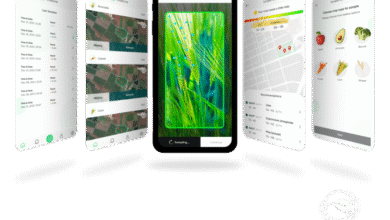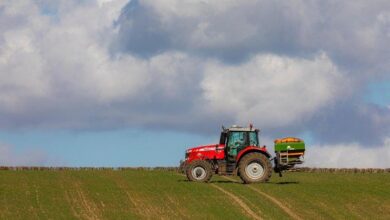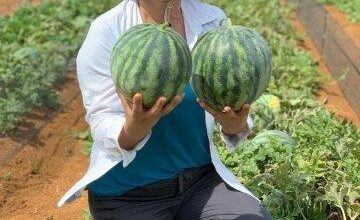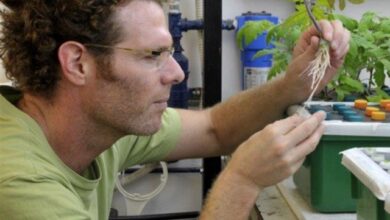*Institute of Plant Sciences, Agricultural Research Organization (ARO) – Volcani Institute, Rishon LeZion, Israel
The ongoing climate changes are bringing on more frequent and more extreme weather conditions, amongst which are frost events that occur in atypical regions of the world. Radiation frosts are characterized by sub-zero temperatures at night/dawn followed by high light during the following clear-sky day.
The combination of these two sequential conditions can result in substantial damage to sub/tropical crop species, such as avocado, banana and mango. The avocado cultivar ‘Hass’, which is the most popular and sought-after in the world, is cold-sensitive. There are several means for frost protection in orchards, including over-head sprinklers, wind machines and chimneys, as well as top nets. However, not all of these are practical at every site prone to frost events.
One of the key processes affected by abiotic stress in plants is photosynthesis. While photosynthetic activity is essential to plant growth and survival, under stress conditions it can be a source for hazardous compounds that, in extreme cases, can even lead to plant death. With regard to photosynthesis, the effects of cold and high light include: ‘photoinhibition’ – the accumulation of damage in the two photosystems that carry out the light reactions of photosynthesis, photosystem I (PSI) and photosystem II (PSII); inhibition of stomatal conductance, which allows for gas exchange between the atmosphere and the plant tissue; as well as inhibition of the Calvin-Benson-Bassham cycle – the biochemical cycle by which CO2 is fixed to form sugar.
The imbalance between the light reactions and the downstream biochemical reactions, leads to enhanced formation of reactive oxygen species – molecules that inflict damage onto all cellular components. Maintaining efficient detoxification and repair machineries are therefore essential for dealing with and surviving the environmental stress conditions.

Photo 2
Plants can be prepared to deal with stresses by ‘chemical priming’, in which they are treated with specific chemical agents that elicit physiological responses prior to being exposed to stress conditions. Chemical priming, using a variety of compounds, has been documented to improve plants’ coping with different biotic and abiotic stresses. One known chemical priming agent in plants is sodium hydrosulfide (NaHS), which serves as a donor for the gaseous molecule hydrogen sulfide (H2S). H2S is an endogenous signaling molecule that affects various biological processes, and mediates responses to abiotic stress conditions. Here, we describe our studies, combining both basic and applied research, about priming avocado trees with NaHS for dealing with frost and chilling conditions.
In the first part of the work, which has been published recently (Joshi et al. 2020), we studied the effects of simulated ‘radiation frost’ conditions (-2 to -3°C at night followed by >1000 µmol photons m –2 s –1 of natural sunlight at mid-day) on photosynthesis in young grafted ‘Hass’ trees as the model system (see picture 1). We then characterized the response to the same conditions in trees that were primed (by foliar spraying) with NaHS prior to the frost conditions. We found that following frost conditions NaHS-primed trees exhibited reduced inhibition of CO2 assimilation, less photoinhibition of PSII, an improved capacity to dissipate excess energy – called ‘non-photochemical quenching’, and a lower accumulation of harmful hydrogen peroxide in their leaves.
Together, these demonstrated the improved response of the young primed trees to frost conditions. Continuing this direction of research, we are also interested in gaining insight into the molecular mechanisms of the response to frost in avocado ‘Hass’ trees, and how the response is modulated by NaHS priming. Toward this, we are currently performing a transcriptome (gene expression) analysis in the young tree model. This part of the study is expected to highlight key genes that are affected by cold and priming, and whose expression levels can contribute toward the improved response of avocado ‘Hass’ trees to frost.

Photo 3
The applied part of the research encompasses testing NaHS priming of ‘Hass’ trees in commercial orchards during winter. In this set-up, we are dependent on the natural environmental conditions, and it is therefore essential to conduct multi-season experiments in order to characterize the trees’ response to priming. One set of experiments was carried out in a young ‘Hass’ orchard (two years after planting, picture 2), and the other in a mature ‘Hass’ orchard (pictures 3 & 4). We found that on its own, application of NaHS (without frost stress), had only small effects on photosynthetic assimilation of the trees on the following days. Over the past two winters there were no frost events, however, on several occasions low chilling temperatures occurred in the morning. Notably, after a morning of chilling stress (0°C) in the young orchard, primed trees exhibited lower photoinhibition at noon as compared to non-primed ones.
Similarly, following chilling stress (0-2°C) in the mature orchard, primed trees had reduced inhibition of stomatal conductance and transpiration as well as of photosynthetic assimilation during the day. These results indicate that under natural winter conditions, primed trees accumulate less damage and/or have improved repair mechanisms after being subjected to chilling stress. Although the effects of NaHS priming on ‘Hass’ trees still needs to be tested at real life frost conditions, the results obtained so far are encouraging.

Photo 4
During the winter, chilling conditions on successive days can result in significant inhibition of photosynthetic assimilation. Reduction of this inhibition, by means of priming the trees, could increase available resources and potentially also improve the fruit yield. However, this requires further investigation over several seasons. In sum, our work provides a prospect for improving the response of photosynthesis to cold conditions in a subtropical fruit tree species by chemical priming in orchards during winter.
Part of this article is based on the manuscript: Joshi, N.C., Yadav, D., Ratner, K., Kamara, I., Aviv-Sharon, E., Irihimovitch, V. and Charuvi, D. (2020) Sodium hydrosulfide priming improves the response of photosynthesis to overnight frost and day high-light in avocado (Persea americana Mill, cv. ‘Hass’). Physiol. Plant., 168, 394-405. https://doi.org/10.1111/ppl.13023
Photography by Itzhak Kamara & Dana Charuvi.





